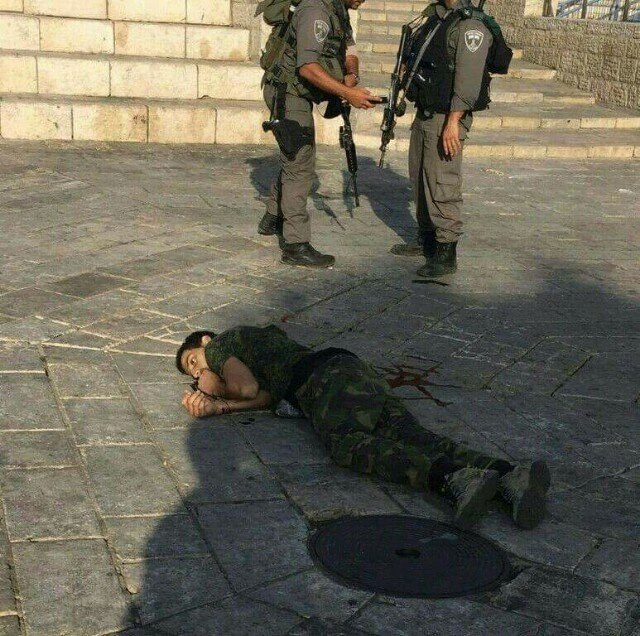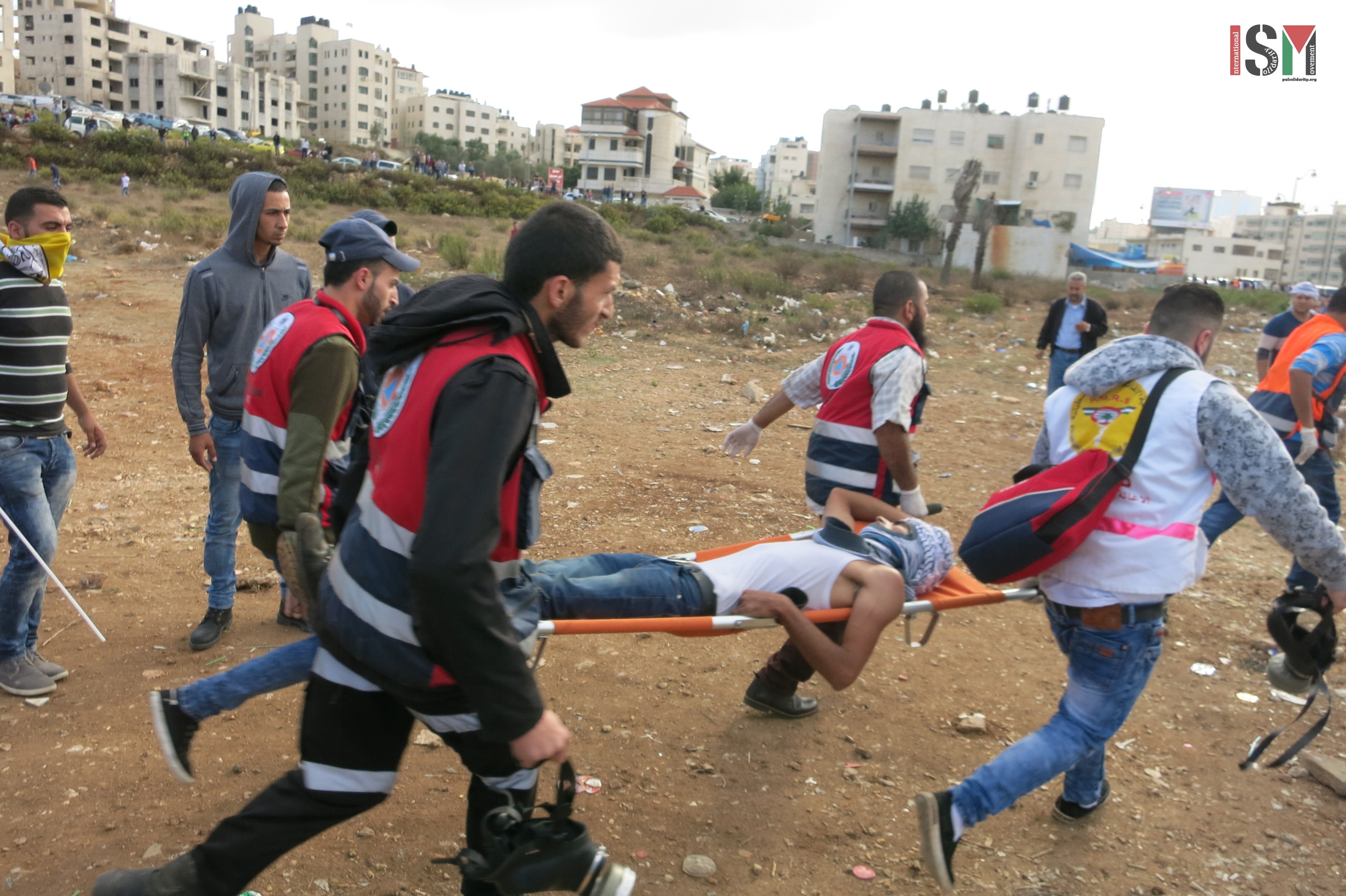Tag: Live Ammunition
-
31 martyrs in 14 days: 20 year old murdered today in Jerusalem
14th October 2015 | International Solidarity Movement, al-Khalil team | Hebron, occupied Palestine The oldest was 30, the youngest just 2 years old. 31 Palestinians have been murdered by Israeli forces since an escalation in violence, triggered by restrictions on al Aqsa Mosque, spread like wild fire across the occupied Palestinian territories and the besieged…
-
Non violent action by elderly Palestinian despite Israeli military violence
10th October 2015 | International Solidarity Movement, Al-Khalil team | Hebron, occupied Palestine Today on October 10th in Al-Khalil at around 13h, thousands attended the funeral of Mohammed Fares Mohammed Abdullah Al-Jabari, killed yesterday near Kiryat Arba at the hands of an Israeli police officer, after allegedly trying to stab him. After the funeral a…
-
Beit El demonstration under attack by Israeli forces after Martyr laid to rest
10th October 2015 | International Solidarity Movement, Al-Khalil team | Ramallah, occupied Palestine Less than one hour after the Halabi family laid their son, martyr Mohannad al-Halabi, to rest in a cemetery in Ramallah, violent confrontations broke out in the nearby Beit El area. In a continuation of the sharp escalation in violence seen across…



